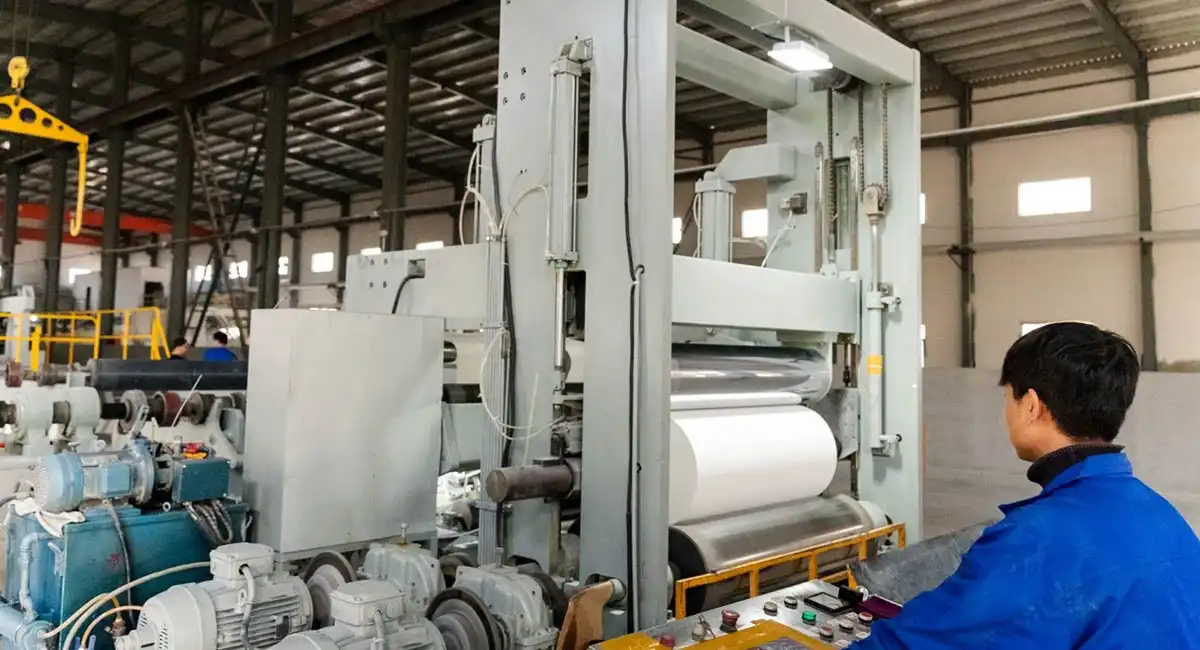The decorative base paper industry, integral to applications in interior design and furniture, has embraced a series of technological advancements that significantly enhance its production process. These innovations not only cater to aesthetic and functional demands but also underscore a commitment to environmental sustainability.
Let’s explore these advancements in detail, highlighting their applications, improvements, and impact on the industry.
Digital Printing Technology: Revolutionizing Design Flexibility
Digital printing technology has been a game-changer for the decorative base paper industry. This technology allows for high-definition, intricate designs that were previously challenging to achieve.
For instance, companies like HP and Canon have developed digital printers capable of printing detailed and vibrant patterns on base paper, enabling manufacturers to offer a vast array of designs. This flexibility is particularly beneficial for the furniture paper sector, where customized and small-batch designs are increasingly in demand. The ability to quickly change designs without the need for new printing plates reduces waste and increases efficiency.
Advanced Bleaching Techniques: Towards Eco-friendly Production
Moving away from traditional chlorine-based bleaching, the industry has adopted eco-friendly methods like oxygen, ozone, and hydrogen peroxide bleaching. These techniques have significantly reduced the release of harmful dioxins and other pollutants.
For example, some companies have implemented Totally Chlorine Free (TCF) and Elemental Chlorine Free (ECF) bleaching processes, which have shown to reduce environmental impact significantly. This shift not only aligns with global environmental standards but also meets the increasing consumer demand for sustainable products.
Recycling and Recovery Technologies: Closing the Loop
The push towards a circular economy is evident in the decorative base paper industry’s adoption of recycling and recovery technologies. Modern mills now incorporate systems that recover and reuse water and chemicals, dramatically reducing waste and conserving resources. An example is the implementation of closed-loop water systems in mills, which have drastically cut down water consumption and effluent discharge.
Additionally, the integration of post-consumer waste into the production process is a significant step towards reducing reliance on virgin resources, aligning with global sustainability goals.
Energy Efficiency Improvements: Cutting Down Carbon Footprint
Energy efficiency is a critical area of improvement in paper production. Technological advancements have led to the development of more energy-efficient pulping processes and drying methods. For instance, Andritz, a global supplier of plants, equipment, and services, has developed energy-efficient drying solutions that reduce energy consumption in paper mills.
The adoption of renewable energy sources, such as solar and wind power, by leading manufacturers, further underscores the industry’s commitment to reducing its carbon footprint.
Sustainable Sourcing Technologies: Ensuring Responsible Raw Material Use
The use of technology in sustainable raw material sourcing is crucial for the industry. Advanced supply chain management tools and software ensure the traceability and sustainability of wood and other raw materials. This is exemplified by the Forest Stewardship Council (FSC) certification, which many paper manufacturers now adhere to, ensuring that the wood pulp used is sourced from responsibly managed forests.
3D Printing and Embossing Techniques: Elevating Aesthetic Appeal
The introduction of 3D printing and embossing technologies has redefined the aesthetics of decorative paper. These technologies enable the creation of textured and three-dimensional effects, greatly enhancing the visual appeal and tactile experience of furniture paper.
This has broadened the application scope of decorative paper, making it a popular choice in high-end furniture and interior design projects.
Biodegradable and Eco-Friendly Materials: Pushing for Greener Alternatives
In response to environmental concerns, there has been significant progress in developing biodegradable and eco-friendly materials for paper production. The use of organic dyes and renewable materials minimizes the environmental footprint of decorative papers. An example of this is the growing use of soy-based inks and natural dyes, which are less harmful to the environment compared to their synthetic counterparts.
Automation and Smart Manufacturing: Enhancing Efficiency and Precision
Automation and smart manufacturing technologies are streamlining production in the paper industry. The integration of robotics and AI-driven process optimization has led to increased efficiency, reduced waste, and enhanced precision. Real-time monitoring systems allow for better quality control and quicker response to production issues, ensuring a consistently high-quality product.
In conclusion, the technological advancements in decorative base paper production mark a significant stride towards innovation, sustainability, and efficiency. These advancements are not just improving the production process but are also shaping the future of the furniture paper industry. As consumer preferences continue to evolve towards eco-friendly and high-quality products, these technologies ensure that the industry remains adaptive, responsive, and responsible.

